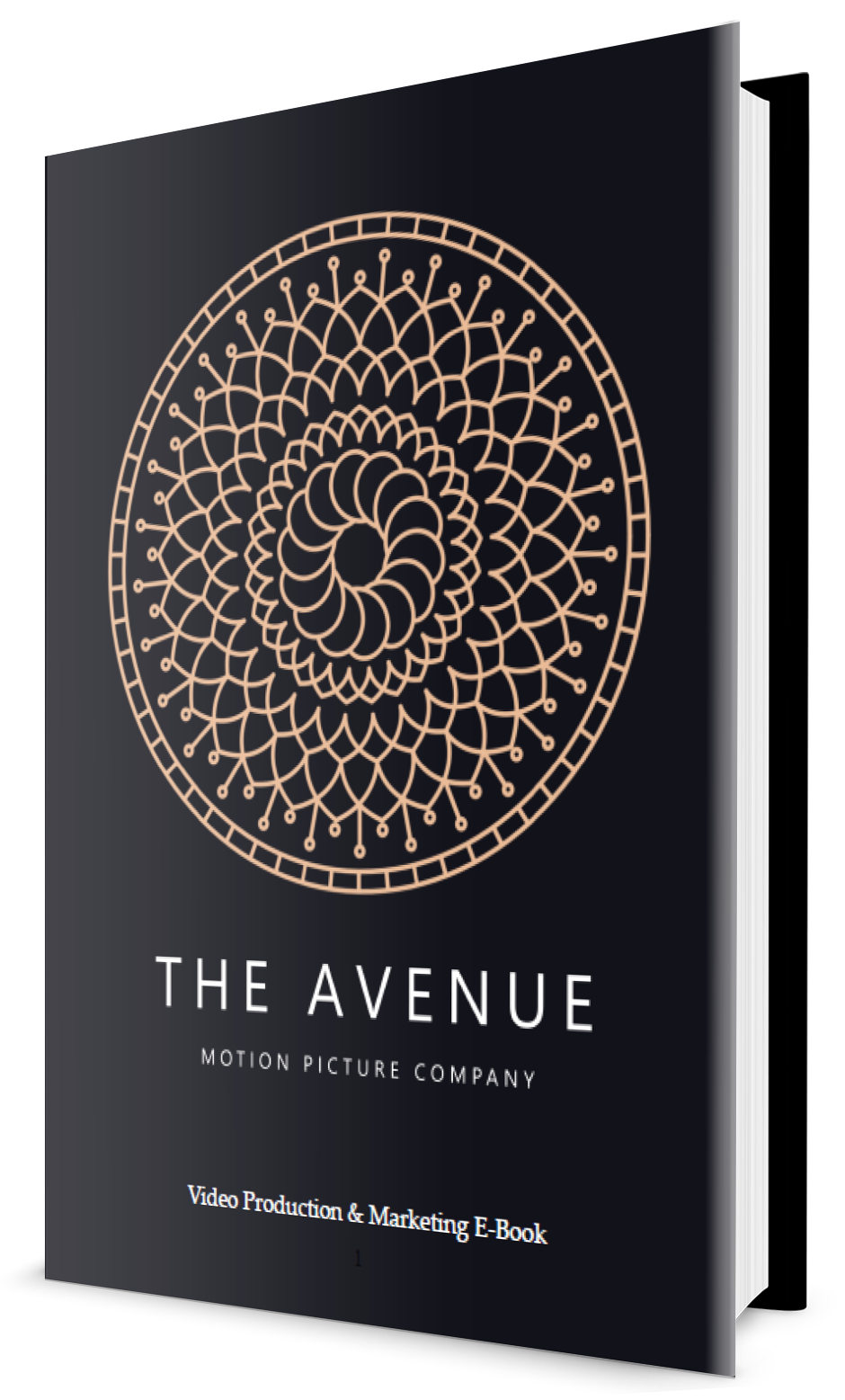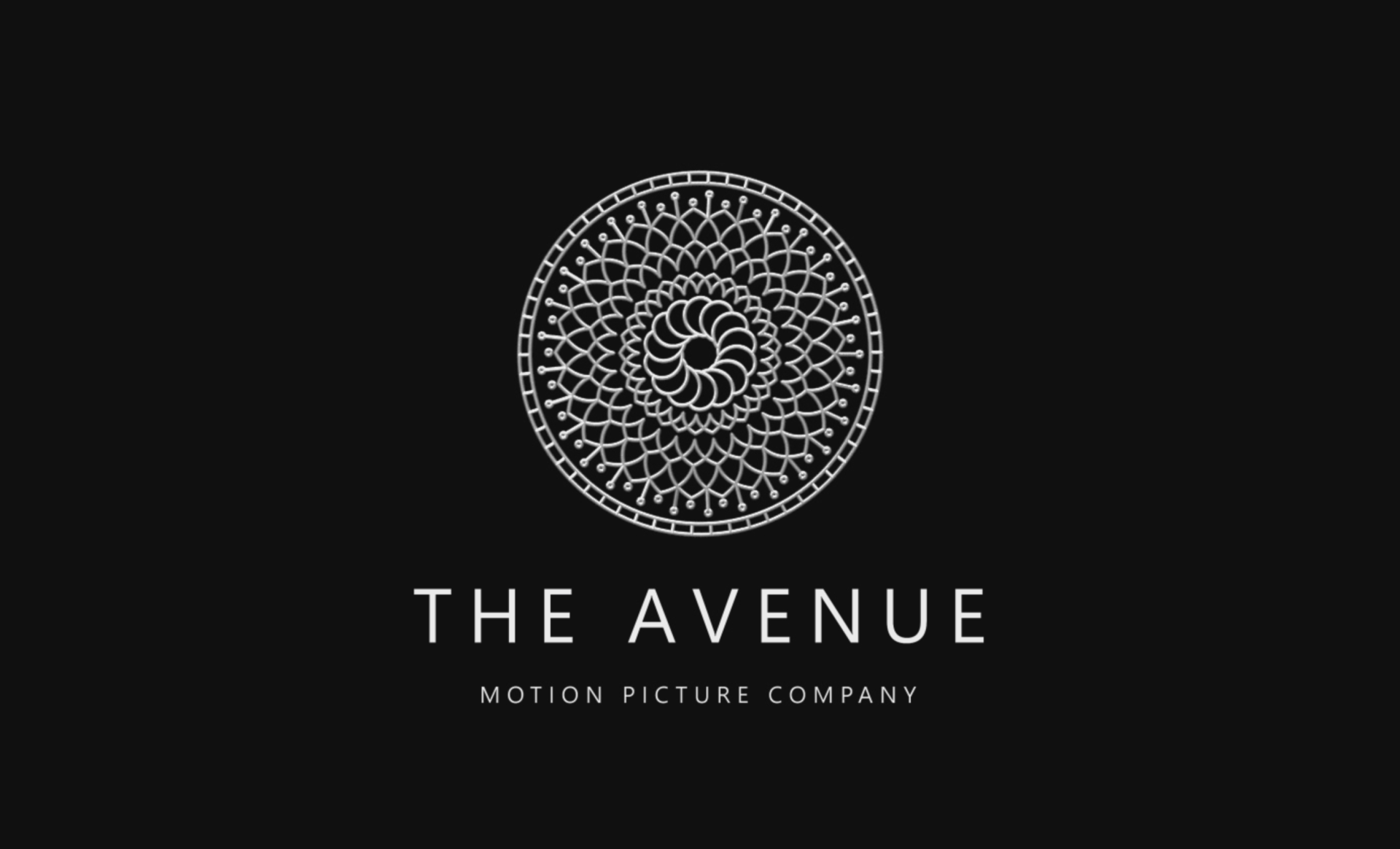Filmmakers Partnering
Business Communications
What is Video Strategy?
In this series of short films below we reveal the tried & tested methods for a successful Video Marketing campaign. If you’re a marketing professional or run your own business, then in today’s online video-dominated world successful ‘Strategy thinking’ is an essential to have in your marketing toolkit.
Video Strategy has its rules, and we’re going to show you what some of these are.
What is Video Strategy?
In this series of short films below we reveal the tried & tested methods for a successful video marketing campaign. If you’re a marketing professional or run your own business then in today’s online video-dominated world successful ‘Strategy thinking’ is an essential to have in your marketing toolkit.
Video Strategy has its rules, and we’re going to show you what some of these are.
NOTE: these videos have been filmed and are currently being edited, to be published soon.
In the meantime, we present the scripts below.
Thank you for your patience.
NOTE: these videos have been filmed and are currently being edited, to be published soon.
In the meantime, we present the scripts below.
Thank you for your patience.
1. What Video Strategy contributes to your business and marketing?
In this series of short films we’re here to reveal tried & tested methods for a successful video marketing campaign. If you’re a marketing professional or run your own business a successful Video Strategy is an essential marketing tool, it has its rules, and we’re going to show what some of these are.
Let’s start with mind-set. David Ogilvy, the King of Madison Avenue in the 1970s, once said, “Advertising doesn't produce sales; it produces the willingness to buy.” Substitute advertising with marketing and we have our foundational approach. By presenting a positive image of your offering that can speak directly to your audience, which aims to solve their challenges, you’re establishing an environment that helps you be seen by the right people… and close that deal.
Let’s go deeper, add up all your time watching videos online as opposed to reading large chunks of text, and what would you say? Maybe four-fifths of your time spent is watching videos? It’s a simple truth that social media without video has the highest abandonment rates, so treat video like the primary content format that it is. It's the foundation for how a brand conveys its core values online, which deepens the relationship with your audience.
All this said, each viewer may be at a different stage of the buying cycle. Some are discovering your company for the first time; others may be comparing your offering to your competitors; while some may already be at the purchasing stage and simply need that final push. So before embarking on any video campaign ask yourself, “What are we aiming for?” What are the issues your audience are facing? And what do you ultimately want to achieve?
Thanks to social media and its inherently shareable nature, a well-planned and executed Video Strategy is key to marketing success. And what’s the main element to a successful video?
…Story. And we’ll explore Story in the next in our series on Video Marketing Strategy.
2. What Strategy Video Storytelling is and its benefits?
Video marketing is the art and science of using Content Creation to convey your brand’s values, build trust and drive meaningful action. It positions your brand distinctively in a crowded digital landscape by establishing a connection. Story is the backbone and foundation for this. There are many different genres in which you can tell your story:
There is the classic ‘corporate video’-style of presentation that’s now adapted to social media distribution. This could be relaying your company’s history and shining a spotlight on your fantastic staff, by product demos, customer testimonials, tutorials, ‘Thought Leadership’ interviews, and even filming of live events.
Once you’ve chosen your genre then we start scripting. Video Storytelling is a dynamic medium, where we meld together spectacle, emotion and the communication of crucial information about your company and overall brand image. Quality over quantity prevails in the realm of video, and be aware that your budget influences the quality of your content. Substandard videos can do more harm than good. For example, we cannot emphasise enough the need for good quality audio – poor audio is unforgivable, and your brand will suffer.
Let’s analyse story structure. It depends on the genre, of course, but let’s say you’re showcasing a product demo. You’re instantly going for the hook – grabbing the audience’s attention within seconds; next it’s the hold – the most concise summary of features & benefits and your overall value proposition; and finally there’s the pay-off – offer a clear “Call To Action”. And always keep in mind that each viewer has a different level of knowledge with your offering.
Alternatively, if you’re presenting a ‘Thought Leadership’ film then pre-prepared questions followed by the speaker’s responses should create a coherent flow – highlight their expertise, give a commentary on current trends, a forecast for the future, and finally round it off with a ‘Call to Action'. Also, a key scripting element is to have your audience want to ask questions while viewing your content and then post these in the comments sections. These then provide you with opportunities for further engagement and future content creation. Remember, in sales a question is a buying signal.
Your aim is to be inspirational and entertaining throughout, and you should always know your ending: where you’re heading – whether that be your audience interacting with you for a sale, share the link, click onto a further video, subscribe to a newsletter, or engage with like-minded individuals in the comments section.
Remember to always keep in mind that you’re heading towards your ‘Call To Action’.
We’ve covered some of the broad bases of Story and brand messaging. Now head over to the next video in this series: the mechanics of what makes an overall Video Marketing Strategy?
3. What entails a Video Strategy?
There is an art to placing your video right before the noses of your target audience. Let’s delve into the seven key points of a successful Video Marketing Strategy.
One, who is your audience? This will have been pinpointed during your general marketing planning, and this means discovering where your target demographics tend to visit online. Set clear goals and Key Performance Indicators. Overall, the question is: What is the optimal customer experience that satisfies and creates customer loyalty?
Two, what is the goal for your video? What do you want your audience to think, feel and do after watching it? To build credibility and trust? Click-through for a sale? Knowing upfront where you wish to end up clarifies this question.
Three, plan content distribution. You need to be thinking about the strengths and weaknesses of various methods of distribution platforms that are available to you. This means understanding the difference between the long-form, highly descriptive nature of YouTube content compared to the short bursts of razzmatazz on TikTok and Instagram. You can also post your videos through newsletters and email campaigns – embedding them in blogs and on high-traffic landing pages. Remember, it’s not about you, but about the quality of information you’re communicating to your audience.
Four, set a realistic budget and plan for the production of high-quality content. High production values matter because of one simple, universal truth: First impressions count.
Five, create a production timeline. Scripts need developing, locations sought, people booked, the right equipment obtained – because filming any project is a meticulous task. Try not to overlook anything: plan, plan, plan.
Six, create a distribution schedule. What is your primary platform? And how are you to repurpose content for other platforms, and optimising for each – keywords, thumbnails, tags? You can add subtitles and transcripts for accessibility and search indexing to improve viewer navigation. You must keep pace with new techniques. The truth is, many companies publish video content without a clear distribution plan, and as a result they don’t see much of a return on investment.
Seven – monitor and analyse performance. Glean insights from view counts, watch times and interaction rates. Measure click-through rates, downloads, conversions. Use the metrics to double-down on what works, dropping altogether what doesn’t. So stop relying on gut feelings and let the data guide your video strategy, because video marketing is an ongoing process of evolving, refining and testing.
In the last in our series of videos we will be looking at one of the most efficient methods enabling you to make the most of your content, and to gather invaluable data on the widest net of potential customers: that is, repurposing your videos for multi-platform distribution.
4. Repurposing Videos and utilising a multi-platform approach.
Repurposing a well-crafted piece of video content is a goldmine for time-strapped marketers and one of the smartest ways to extend the life of your messaging. Let’s have a brief overview of the strengths of each platform where you might be publishing your repurposed content.
YouTube is ideal for in-depth tutorials and long-form storytelling. It provides a fertile ground for rich and comprehensive content that viewers can immerse themselves in. It is also the world’s second largest search engine, and publishing on YouTube will boost your algorithm.
LinkedIn caters to professionals. It’s the world’s largest databank of C-suite individuals, combined with its own internal messaging system. It offers you a wealth of opportunities for reaching out. Its algorithm promotes informative video content, case studies and ‘Thought Leadership’-style presentations.
Facebook, with its broad user-base, is well suited for numerous video types, from short clips to live streams. Its underlying aim is to bolster shareability and community engagement. And let’s face it, it was the pioneer in this field and remains so.
Then there are the platforms that thrive on shorts and reels cuts: Instagram, TikTok and X. So what’s the difference. Instagram thrives on polished, well-edited shorts; TikTok prefers its presentations to be raw; and X, being primarily designed for text engagement, publishes both polished and raw content as long as they promote debate.
Any and all of these platforms can be utilised to help achieve your objectives, and further cross-platform promotion adds exponential opportunity to reach more viewers. As a side note, behind-the-scenes footage can also be filmed – maybe even on your mobile phone? This adds multiple dimensions to your brand’s relatability. As ever, it’s all in the planning.
The digital realm is a mosaic of platforms each offering a unique eco-system catering towards specific audience behaviours. The task of a good Video Strategy Agency is to take the brief provided by your own marketing department, develop it further with one tailoring eye on the video’s production, adding in the filmmaker’s flair for storytelling and spectacle, while the other eye focuses on your wider marketing objectives and KPIs. Together we can come up with video presentations and a distribution plan that connects with your audience in every desirable way imaginable. This delivers to you a fantastic Return on Investment.
Video is baseline marketing, and yet to many businesses it may feel like that “big, heavy thing” – it doesn’t have to be. This is where hiring a skilled Video Strategy Agency can really pay off. It goes without saying that we’ve invested in all the right gear: great cameras, audio equipment, lights, editing systems, autocue, drones, gimbals. We also have access to additional specialised talent such as on-screen presenters and 3D animation artists. Above all what we bring to the table is threefold: filmmaking artistry, marketing vision, plus the management skills to pull everything together.
Feel free to reach out to us with any of your video or marketing queries. We are filmmakers who love our craft, plus experienced marketers who know how to bring you the best results, and we look forward to working with you. Thank you for spending your time with us and we hope this series of short videos has been informative.
1. What Video Strategy contributes to your business and marketing?
In this series of short films we’re here to reveal tried & tested methods for a successful video marketing campaign. If you’re a marketing professional or run your own business a successful Video Strategy is an essential marketing tool, it has its rules, and we’re going to show what some of these are.
Let’s start with mind-set. David Ogilvy, the King of Madison Avenue in the 1970s, once said, “Advertising doesn't produce sales; it produces the willingness to buy.” Substitute advertising with marketing and we have our foundational approach. By presenting a positive image of your offering that can speak directly to your audience, which aims to solve their challenges, you’re establishing an environment that helps you be seen by the right people… and close that deal.
Let’s go deeper, add up all your time watching videos online as opposed to reading large chunks of text, and what would you say? Maybe four-fifths of your time spent is watching videos? It’s a simple truth that social media without video has the highest abandonment rates, so treat video like the primary content format that it is. It's the foundation for how a brand conveys its core values online, which deepens the relationship with your audience.
All this said, each viewer may be at a different stage of the buying cycle. Some are discovering your company for the first time; others may be comparing your offering to your competitors; while some may already be at the purchasing stage and simply need that final push. So before embarking on any video campaign ask yourself, “What are we aiming for?” What are the issues your audience are facing? And what do you ultimately want to achieve?
Thanks to social media and its inherently shareable nature, a well-planned and executed Video Strategy is key to marketing success. And what’s the main element to a successful video?
…Story. And we’ll explore Story in the next in our series on Video Marketing Strategy.
2. What Strategy Video Storytelling is and its benefits?
Video marketing is the art and science of using Content Creation to convey your brand’s values, build trust and drive meaningful action. It positions your brand distinctively in a crowded digital landscape by establishing a connection. Story is the backbone and foundation for this. There are many different genres in which you can tell your story:
There is the classic ‘corporate video’-style of presentation that’s now adapted to social media distribution. This could be relaying your company’s history and shining a spotlight on your fantastic staff, by product demos, customer testimonials, tutorials, ‘Thought Leadership’ interviews, and even filming of live events.
Once you’ve chosen your genre then we start scripting. Video Storytelling is a dynamic medium, where we meld together spectacle, emotion and the communication of crucial information about your company and overall brand image. Quality over quantity prevails in the realm of video, and be aware that your budget influences the quality of your content. Substandard videos can do more harm than good. For example, we cannot emphasise enough the need for good quality audio – poor audio is unforgivable, and your brand will suffer.
Let’s analyse story structure. It depends on the genre, of course, but let’s say you’re showcasing a product demo. You’re instantly going for the hook – grabbing the audience’s attention within seconds; next it’s the hold – the most concise summary of features & benefits and your overall value proposition; and finally there’s the pay-off – offer a clear “Call To Action”. And always keep in mind that each viewer has a different level of knowledge with your offering.
Alternatively, if you’re presenting a ‘Thought Leadership’ film then pre-prepared questions followed by the speaker’s responses should create a coherent flow – highlight their expertise, give a commentary on current trends, a forecast for the future, and finally round it off with a ‘Call to Action'. Also, a key scripting element is to have your audience want to ask questions while viewing your content and then post these in the comments sections. These then provide you with opportunities for further engagement and future content creation. Remember, in sales a question is a buying signal.
Your aim is to be inspirational and entertaining throughout, and you should always know your ending: where you’re heading – whether that be your audience interacting with you for a sale, share the link, click onto a further video, subscribe to a newsletter, or engage with like-minded individuals in the comments section.
Remember to always keep in mind that you’re heading towards your ‘Call To Action’.
We’ve covered some of the broad bases of Story and brand messaging. Now head over to the next video in this series: the mechanics of what makes an overall Video Marketing Strategy?
3. What entails a Video Strategy?
There is an art to placing your video right before the noses of your target audience. Let’s delve into the seven key points of a successful Video Marketing Strategy.
One, who is your audience? This will have been pinpointed during your general marketing planning, and this means discovering where your target demographics tend to visit online. Set clear goals and Key Performance Indicators. Overall, the question is: What is the optimal customer experience that satisfies and creates customer loyalty?
Two, what is the goal for your video? What do you want your audience to think, feel and do after watching it? To build credibility and trust? Click-through for a sale? Knowing upfront where you wish to end up clarifies this question.
Three, plan content distribution. You need to be thinking about the strengths and weaknesses of various methods of distribution platforms that are available to you. This means understanding the difference between the long-form, highly descriptive nature of YouTube content compared to the short bursts of razzmatazz on TikTok and Instagram. You can also post your videos through newsletters and email campaigns – embedding them in blogs and on high-traffic landing pages. Remember, it’s not about you, but about the quality of information you’re communicating to your audience.
Four, set a realistic budget and plan for the production of high-quality content. High production values matter because of one simple, universal truth: First impressions count.
Five, create a production timeline. Scripts need developing, locations sought, people booked, the right equipment obtained – because filming any project is a meticulous task. Try not to overlook anything: plan, plan, plan.
Six, create a distribution schedule. What is your primary platform? And how are you to repurpose content for other platforms, and optimising for each – keywords, thumbnails, tags? You can add subtitles and transcripts for accessibility and search indexing to improve viewer navigation. You must keep pace with new techniques. The truth is, many companies publish video content without a clear distribution plan, and as a result they don’t see much of a return on investment.
Seven – monitor and analyse performance. Glean insights from view counts, watch times and interaction rates. Measure click-through rates, downloads, conversions. Use the metrics to double-down on what works, dropping altogether what doesn’t. So stop relying on gut feelings and let the data guide your video strategy, because video marketing is an ongoing process of evolving, refining and testing.
In the last in our series of videos we will be looking at one of the most efficient methods enabling you to make the most of your content, and to gather invaluable data on the widest net of potential customers: that is, repurposing your videos for multi-platform distribution.
4. Repurposing Videos and utilising a multi-platform approach
Repurposing a well-crafted piece of video content is a goldmine for time-strapped marketers and one of the smartest ways to extend the life of your messaging. Let’s have a brief overview of the strengths of each platform where you might be publishing your repurposed content.
YouTube is ideal for in-depth tutorials and long-form storytelling. It provides a fertile ground for rich and comprehensive content that viewers can immerse themselves in. It is also the world’s second largest search engine, and publishing on YouTube will boost your algorithm.
LinkedIn caters to professionals. It’s the world’s largest databank of C-suite individuals, combined with its own internal messaging system. It offers you a wealth of opportunities for reaching out. Its algorithm promotes informative video content, case studies and ‘Thought Leadership’-style presentations.
Facebook, with its broad user-base, is well suited for numerous video types, from short clips to live streams. Its underlying aim is to bolster shareability and community engagement. And let’s face it, it was the pioneer in this field and remains so.
Then there are the platforms that thrive on shorts and reels cuts: Instagram, TikTok and X. So what’s the difference? Instagram thrives on polished, well-edited shorts; TikTok prefers its presentations to be raw; and X, being primarily designed for text engagement, publishes both polished and raw content as long as they promote debate.
Any and all of these platforms can be utilised to help achieve your objectives, and further cross-platform promotion adds exponential opportunity to reach more viewers. As a side note, behind-the-scenes footage can also be filmed – maybe even on your mobile phone? This adds multiple dimensions to your brand’s relatability. As ever, it’s all in the planning.
The digital realm is a mosaic of platforms each offering a unique eco-system catering towards specific audience behaviours. The task of a good Video Strategy Agency is to take the brief provided by your own marketing department, develop it further with one tailoring eye on the video’s production, adding in the filmmaker’s flair for storytelling and spectacle, while the other eye focuses on your wider marketing objectives and KPIs. Together we can come up with video presentations and a distribution plan that connects with your audience in every desirable way imaginable. This delivers to you a fantastic Return on Investment.
Video is baseline marketing, and yet to many businesses it may feel like that “big, heavy thing” – it doesn’t have to be. This is where hiring a skilled Video Strategy Agency can really pay off. It goes without saying that we’ve invested in all the right gear: great cameras, audio equipment, lights, editing systems, autocue, drones, gimbals. We also have access to additional specialised talent such as on-screen presenters and 3D animation artists. Above all what we bring to the table is threefold: filmmaking artistry, marketing vision, plus the management skills to pull everything together.
Feel free to reach out to us with any of your video or marketing queries. We are filmmakers who love our craft, plus experienced marketers who know how to bring you the best results, and we look forward to working with you. Thank you for spending your time with us and we hope this series of short videos has been informative.
Attention is today’s currency.
The business case for Video Strategy is as follows:
* When looking for information on a specific product or service, 60% of people first turn to video – the rest being split between print and online articles, infographics, user manuals, webinars and sales demos
* Over 500 Million people watch Facebook videos every day
* More video gets uploaded to YouTube in a single month than the major US television networks have broadcast in 30 years
* The global average for online video consumption is 84 minutes per day
* More than 75% of all video views come from mobile devices
* 71% of B2B marketers utilise video (and 66% of B2C marketers do)
* The revenue of marketers who use video grows 49% faster, compared to the ones who don’t
* Survey breakdown of preferred platforms –
YouTube, 82%
Facebook, 80%
WhatsApp, 79%
Instagram, 76%
Twitter, 44%
LinkedIn, 30%
Pinterest, 28%
TikTok, 24%
Reddit, 23%
Tumblr, 10%.
[Source: Social Media Today]
Have a Project in mind?
Together, let’s create a Video campaign that’s successful for you.
Reach out …
Have a Project in mind?
Together, let’s create a Video campaign that’s successful for you.
Reach out …
Attention is today’s currency.
The business case for Video Strategy is as follows:
* When looking for information on a specific product or service, 60% of people first turn to video – the rest being split between print and online articles, infographics, user manuals, webinars and sales demos
* Over 500 Million people watch Facebook videos every day
* More video gets uploaded to YouTube in a single month than the major US television networks have broadcast in 30 years
* The global average for online video consumption is 84 minutes per day
* More than 75% of all video views come from mobile devices
* 71% of B2B marketers utilise video (and 66% of B2C marketers do)
* The revenue of marketers who use video grows 49% faster, compared to the ones who don’t
* Survey breakdown of preferred platforms –
YouTube, 82%
Facebook, 80%
WhatsApp, 79%
Instagram, 76%
Twitter, 44%
LinkedIn, 30%
Pinterest, 28%
TikTok, 24%
Reddit, 23%
Tumblr, 10%.
[Source: Social Media Today]
Have a Project in mind?
Together, let’s create a Video campaign that’s successful for you.
Reach out …







